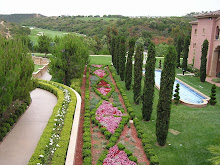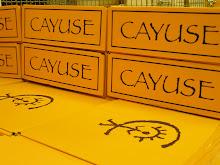
Two Yarra Valley Aussies have declared the Rosé Revolution. Starting today, November 30, the last day of spring in the Southern Hemisphere, Leanne De Bortoli and Stephen Webber have summoned corks to pop worldwide to herald the inaugural Rosé Day.
De Bortoli and Webber want to see rosé take its place as a contender on the world's wine stage, even if rosé isn't quite as serious as many reds, whites, ports, and bubblies. Rather, these Rosé Revolutionaries seek to give rosé respect as dry tasty pinks with texture and finesse to satisfy any wine lover.
While international wine-makers have gravitated towards nuanced rosé production worthy of more refined enjoyment, many still perceive rosé as a one-dimensional, syrupy or candy-like beverage with an alcoholic kick. Blame the cotton-candy we ate as kids or little girls' pink clothing for cementing an association between pink and sweetness. Some rosé snobs point to White Zinfandel to explain their scorn. But the blush wines known as white zins today are produced differently from rosés, with a vastly different result.
The runaway success of White Zinfandel began in 1975 with a wine-making goof at Sutter Home. As told by Bob Trinchero, the mistake involved free-run juice bled off from red Zinfandel grapes. Instead of being fermented to dryness, uncooperative yeast "stuck" the fermentation process, yielding a wine with excess sugar content. Trinchero tasted that slightly pink, sweet wine and decided it was good and different enough to bottle. The rest is history. With a decision that unleashed a sugar-rush of sales, Sutter Home catapulted to success as the second largest independent family-owned winery in the country. In fact, fallout from the White Zinfandel success story is more worthy of praise than scorn. By popularizing Zinfandel in general, Sutter Home's triumph also helped reverse the decline of red Zinfandel viticulture and gave legions of wine newbies their first introduction to the world of wine.
Today's New World rosés look and taste much like their counterparts in the Old World, where the popularity of rosé has never wavered. From tony tourist towns of Provence to sleepy coastal fishing villages along the Mediterranean basin, rosé is a dependable partner for a bevy of fish dishes, fowl, lighter meats, vegetables, legumes, cheeses and dishes with figs or sweeter nuts such as pistachios. Pale or salmon-pink to the pour, these dry roses offer floral and fruity aromas with fresh strawberry to juicy watermelon flavors, often with a delicate streak of dried herbs or a hint of cinnamon spice or nutmeg on the finish.
However you're wired to think about pink, there's a fresh face to rosé that's chiseled, racy and sure to please. A sip of Domaine Tempier Bandol 2009 Rosé at Chez Panisse shows how savory-crisp, food-friendly and sophisticated rosé can be. Try other rosés made from Grenache, Sangiovese, Cabernet Franc or Nebbiolo to discover textured and delicate roses or a lush fruit-bombshell worthy of a pop on a hot summer day. In order words, rosé has come calling and today's as good a day as any to take her on. Vive la Rosé Revolution!





.jpg)




No comments:
Post a Comment